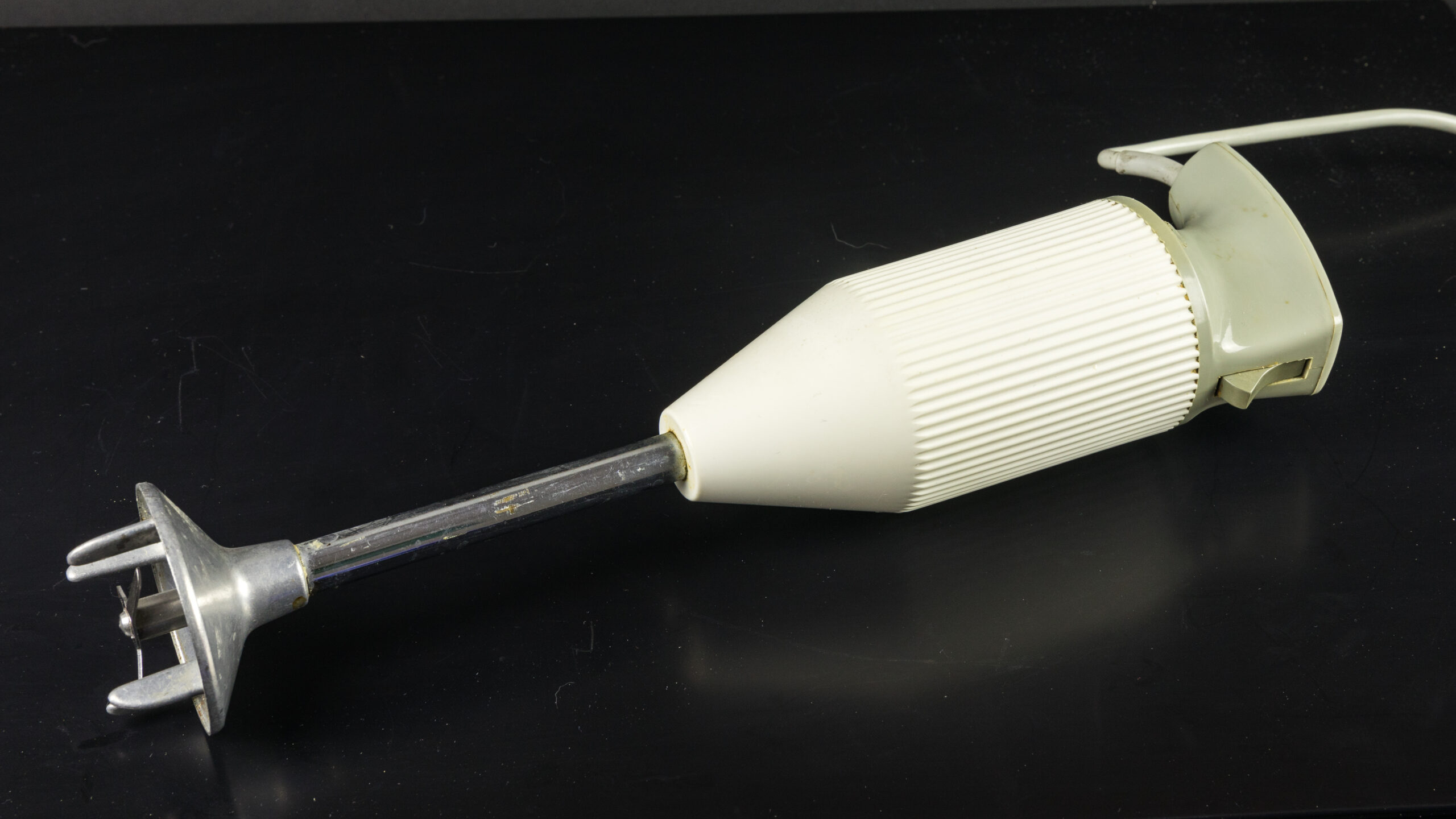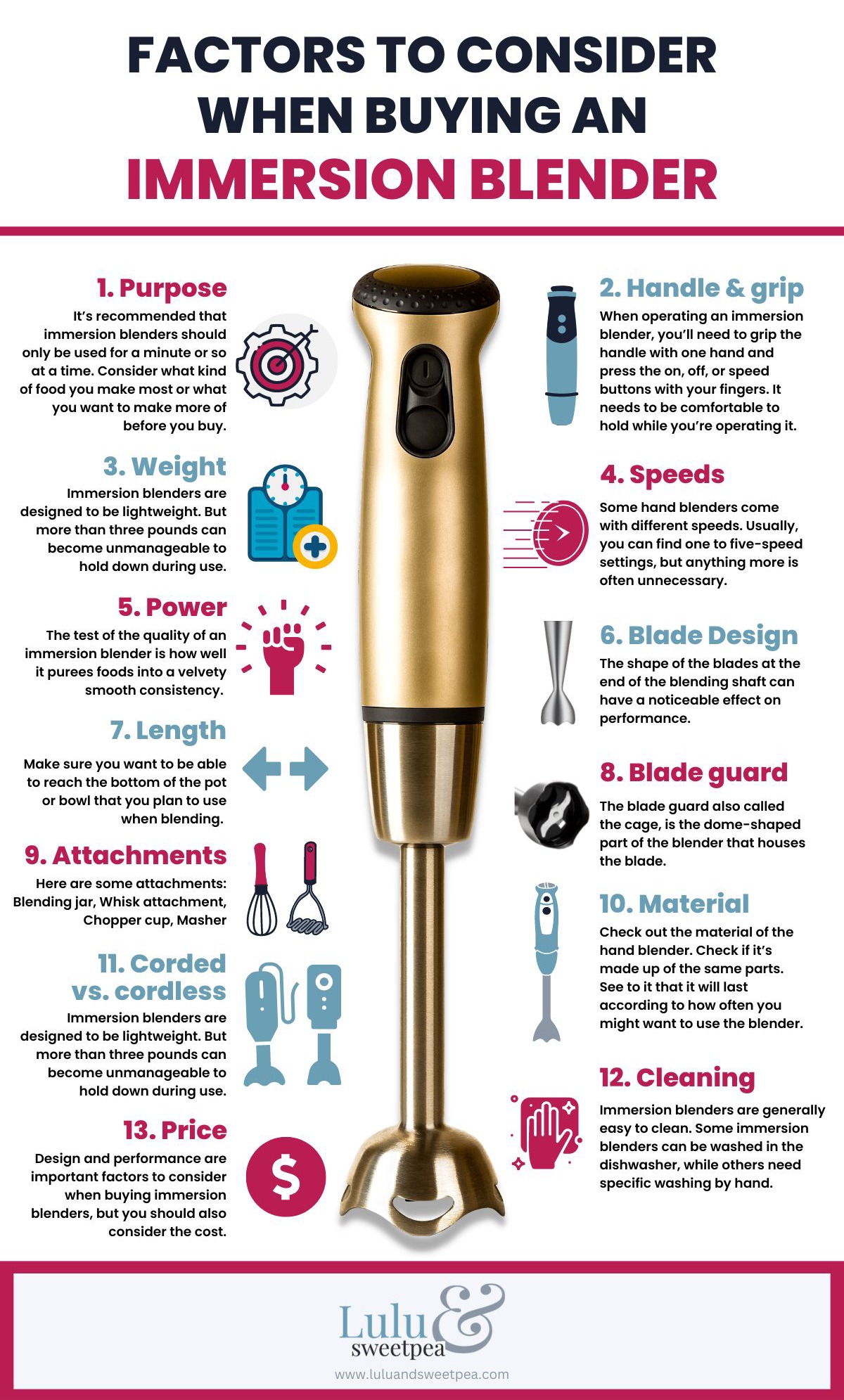Are you fed up with large kitchen appliances taking up valuable counter space? Do you want to make nutritious and tasty meals without having to move items to a separate blender or food processor? If so, it’s time to learn about the advantages of cooking using an immersion blender. This multifunctional kitchen gadget combines convenience, time savings, precision, and variety into a small, simple container. An immersion blender can help you efficiently make tasty and healthy meals, from pureeing soups and sauces to preparing smoothies and dips. Therefore, let’s look at the various benefits of cooking with an immersion blender.
Lightweight and Portable
An immersion blender’s lightweight and portable design is one of its key advantages. Most immersion blenders weigh between two and five pounds, making them much lighter than standard countertop blenders or heavy-duty food processors. This makes them a good solution for folks who do not usually use the equipment or have limited kitchen storage space.
Immersion blenders are also far more convenient than traditional blenders or food processors because of their small, handheld form. Transfer your ingredients into the pitcher of a countertop blender, puree them, and then return them to your cooking pan.
On the other hand, an immersion blender allows you to blend your components in your cooking pot, removing the need to transport the contents back and forth. This not only saves time but also decreases the amount of mess, making cleaning a snap.
Furthermore, their lightweight design makes immersion blenders easier to use than heavy-duty food processors. While food processors are ideal for more difficult jobs such as kneading bread or cutting vegetables, they can be clunky and demanding for more delicate chores such as pureeing soup or preparing a smoothie.
View this post on Instagram
Convenient to Use
One of the primary benefits of utilizing an immersion blender is that you can bring the blender to the food rather than the other way around. This capability is convenient when working with large amounts of food or preparing dishes requiring frequent blending or pureeing.
Traditionally, if you were cooking a large amount of tomato soup, you would need to blend the soup in batches with a countertop blender. This time-consuming technique requires you to transfer the soup from the pot to the blender and then back to the pot. This can be inconvenient and increase the number of dishes that must be washed.
Around 44% of home wastewater is inadequately treated globally, indicating that modern sewage systems still require development. Immersion blenders save you from washing more utensils, reducing the wastewater your kitchen sink or dishwasher discards.
With an immersion blender, you can insert the blender into the saucepan and puree the soup simultaneously. The long, narrow shaft of the immersion blender is ideal for blending soups, sauces, and other liquids directly in the pot, eliminating the need to transfer them to a separate container.
Simple and Easy to Use
Another key benefit of immersion blenders is their ease of use. Immersion blenders, unlike countertop blenders or food processors, do not require any setup or assembly. Simply plug it in, place it in a pot or jar with your ingredients, and you’re ready to go.
Because of their ease of use, immersion blenders are great for those who are new to cooking or wish to streamline their daily routine. You don’t have to worry about deciphering a complicated instruction manual or learning how to properly assemble the blender’s numerous pieces. Simply plug in an immersion blender and begin blending.
View this post on Instagram
Precision
Another key advantage of utilizing an immersion blender is precision. An immersion blender’s blade is long and narrow, allowing it to fit easily into small containers or narrow areas. Immersion blenders are ideal for activities requiring greater accuracy and control, such as blending or pureeing small amounts of ingredients or creating a smooth and uniform texture.
An immersion blender’s blade is usually sharper than that of a countertop blender or food processor. Because of its sharpness, the immersion blender can rapidly and effortlessly blend even the most difficult components, such as ice or frozen fruit. Immersion blenders are perfect for making smoothies, frozen drinks, and other beverages that demand a fine and uniform texture due to their precision and power.
Furthermore, immersion blenders are excellent for making silky smooth soups and sauces. They can effortlessly combine components to create a homogeneous texture with no lumps or clumps. This is very beneficial when producing creamy soups or sauces with a smooth and velvety texture.
Another advantage of immersion blenders’ precision is that they can be used to make emulsions like mayonnaise or vinaigrette. The immersion blender’s small blade rapidly and easily emulsifies oil and vinegar or other ingredients, resulting in a smooth and creamy dressing or sauce.
Adjustable Speed Settings
It’s essential to grasp the various speed settings and how to use them to produce the desired result while using an immersion blender. Immersion blenders usually have several speed settings that can be changed based on the task at hand.
Lower speed settings are often advised for softer or more liquid recipes, such as ultra-smooth gravies, batter, frothed milk, or mayonnaise. Using lower settings will keep the blender from spilling or making a mess while also allowing you to produce a more consistent texture free of pieces and lumps.
Faster speeds, on the other hand, are better suited for pureeing soups with tougher vegetable chunks, blending smoothies with fibrous greens or frozen fruits, or even preparing homemade nut butter. Higher speed settings will aid in breaking tougher materials and creating a smoother, more consistent texture.
It’s important to remember that using higher speed settings may result in more splashing or noise from the blender. It’s also critical not to overwork your components, which might result in a thin and watery consistency or an overworked, less smooth texture.
To maximize the use of your immersion blender, try out different speed settings and recipes to see what works best for you. Always begin with the slowest setting and progressively increase it until you achieve the desired texture. With some experience, you can utilize your immersion blender to make a wide range of delectable and healthful meals.
View this post on Instagram
Cordless Models are Available
For individuals who desire greater versatility in the kitchen, a cordless immersion blender is a fantastic choice. Cordless immersion blenders, unlike typical corded ones, do not require a power outlet to function, allowing you to freely move around the kitchen without being attached to an electrical outlet. This is especially beneficial if you have a small kitchen with few outlets or if you need to transfer your blender between different workspaces.
Rechargeable batteries power cordless immersion blenders, which may typically last up to 30 minutes on a single charge. This is usually enough time to do most blending chores, and many cordless models have a short charging time, letting you recharge the battery in as little as 20 minutes.
Cordless immersion blenders have additional advantages in addition to portability. They are usually lightweight and compact when not in use, making them easy to store in a drawer or cabinet. They are also easy to clean because they lack a cord or motor base, which can be difficult to clean.
There are several factors to consider while selecting a cordless immersion blender. Look for a model with a robust motor that can handle demanding blending jobs and one that comes with various attachments for various blending needs. Selecting a model with a long battery life and a quick charging time is also critical.
View this post on Instagram
Things to Consider Before Buying an Immersion Blender
There is a list of things to think about before purchasing an immersion blender. First, think about what you want to blend with it, as immersion blenders work best with softer foods like soups, sauces, and spreads. If you intend to use it on soups and sauces while they are simmering in the pot, be sure it has a stainless steel blending arm and blade assembly.
The immersion blender should also be easy to hold while operating, with ergonomic handles and soft-touch buttons to make it easier to use. The blender should not be too heavy, have one to five speed options, and wattage ranging from 85 watts to 1,000 watts, while models with motor amps ranging from 200 to 250 watts will be powerful enough to handle most blending chores well.
Moreover, take into account the blade guard or cage, which is the dome-shaped component of the blender that shelters the blade. The holes or cutouts in the blade guard must be broad enough to allow foods to pass through, with wide blade guards with huge vents able to circulate food better and blend faster.
Most immersion blenders have a motor that may be linked to accessories for chopping, whisking, foaming, and processing. If you currently have appliances that can do these functions, you can save money by purchasing a model that lacks the extras. If you don’t have the other pieces, a model with several attachments can be a useful and space-saving solution. For more information, check this handy infographic below!
Cooking with an immersion blender can provide various advantages to your food preparation. It can help you save time and effort, improve the efficiency of your cooking process, and get more exact and consistent outcomes. Furthermore, by easily combining vegetables, fruits, and other ingredients with an immersion blender, you can produce healthier and more delectable meals. An immersion blender can be a crucial weapon in your culinary arsenal, whether you are a professional chef or a home cook.


